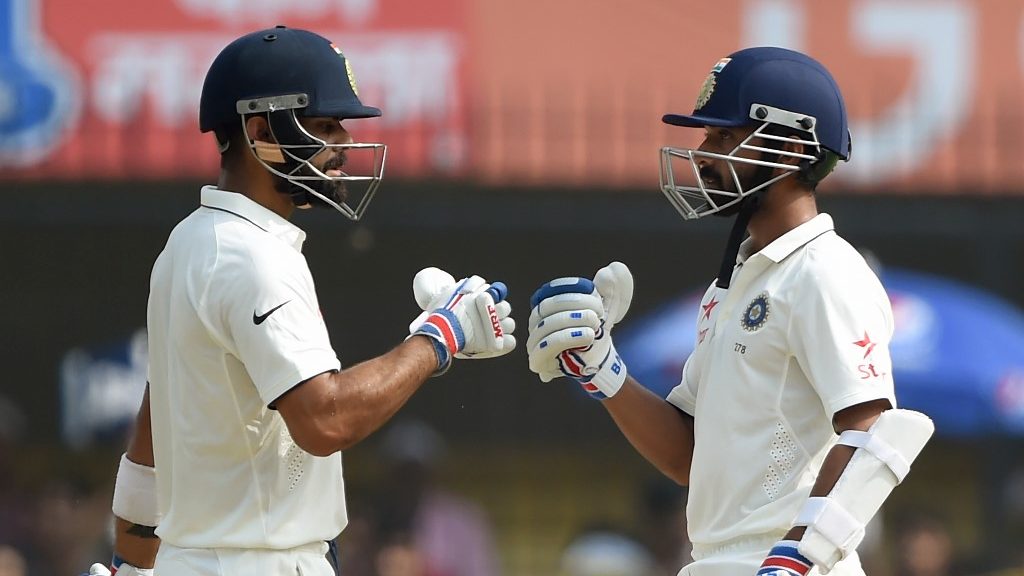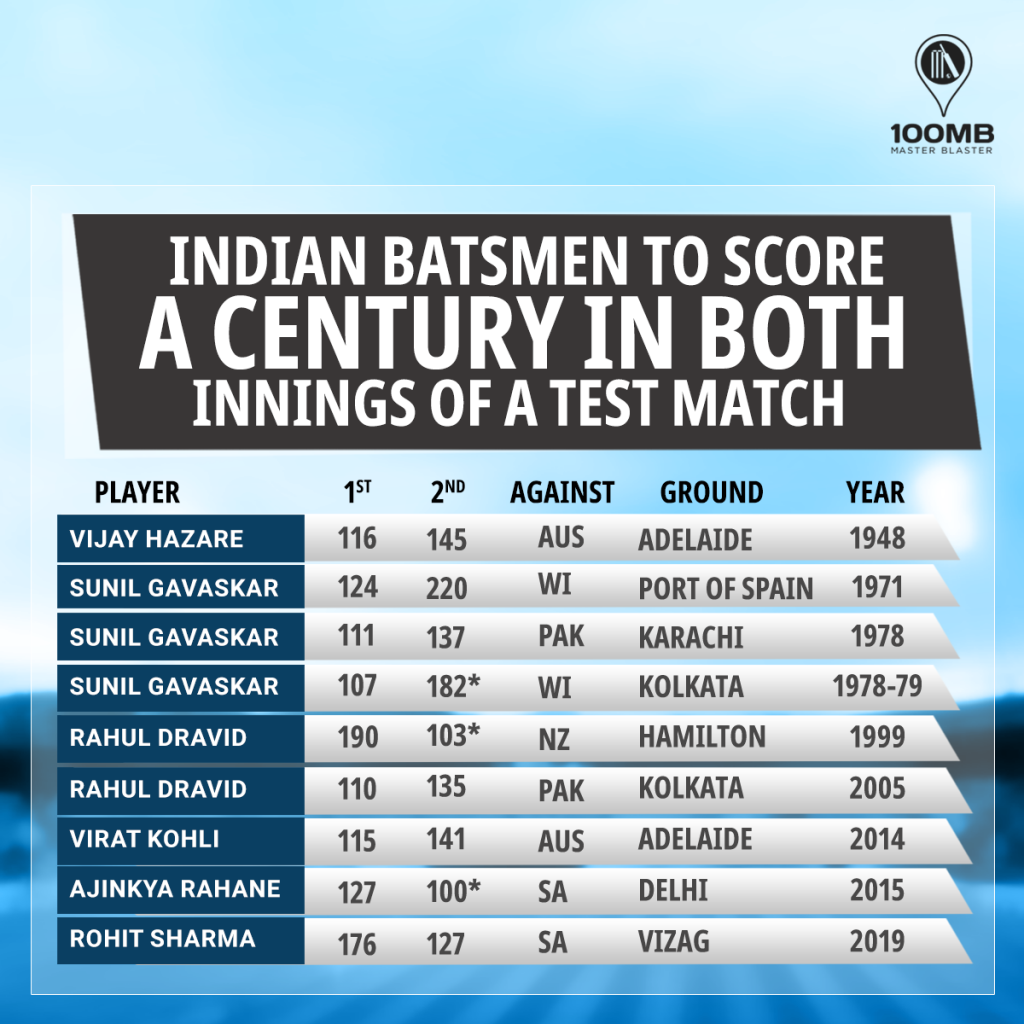Twin tons: Indian batsmen who scored centuries in both Test innings

Scoring centuries in both innings of a Test match is always a dream achievement for batsmen given the different types of situations they deal with in a space of five days. Talking about the Indian cricketers, only six of them have managed to achieve this feat to date. However, there have been nine instances in total for India as Sunil Gavaskar did it for a record three times while Rahul Dravid has done it twice.
The first-ever instance was recorded by Vijay Hazare way back in 1948 when India were on their maiden tour of Australia. Hazare smashed 116 in the first innings and 145 in the second essay in the game hosted by Adelaide but India lost by an innings margin. The next 50 years were all about Sunil Gavaskar as no player except him got twin hundreds in Test cricket for India.
The first of Gavaskar’s three such efforts came in his debut Test series on the Caribbean soil in 1971. Gavaskar scored 124 and 220 respectively by virtue of which India came close to a win despite West Indies took a 166-run lead in the first innings. Gavaskar replicated the feat in the 1978 Karachi Test against Pakistan with scores of 111 and 137.

Later at the end of the year, Gavaskar became the first Indian to score twin centuries in a home Test match. He scored 107 and 182* respectively at the Eden Gardens against West Indies during a Test that began on December 29 and ended on January 3rd. Rahul Dravid joined this list when he scored 190 and 103* respectively against New Zealand in the 1999 Hamilton Test. Dravid repeated this feat in 2005 while leading the team against Pakistan in Kolkata.
Virat Kohli became the 4th Indian with twin Test hundreds when he took on the Aussies at the Adelaide Oval in 2014 which also marked his Test captaincy debut. The Mumbaikars Ajinkya Rahane and Rohit Sharma joined the list in the home Test series against South Africa in 2015 and 2019 respectively. Rohit’s effort came in Vizag where he opened in Test cricket for the first time.
(Stats as on January 17, 2021)
